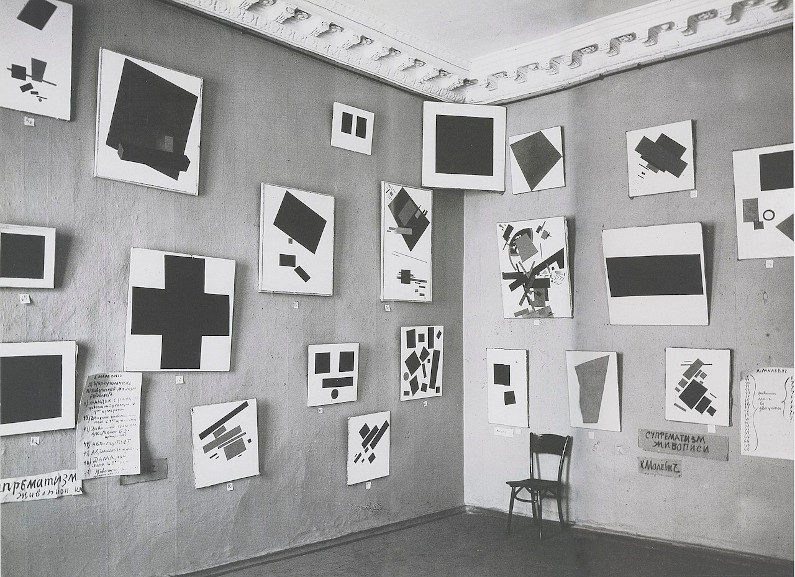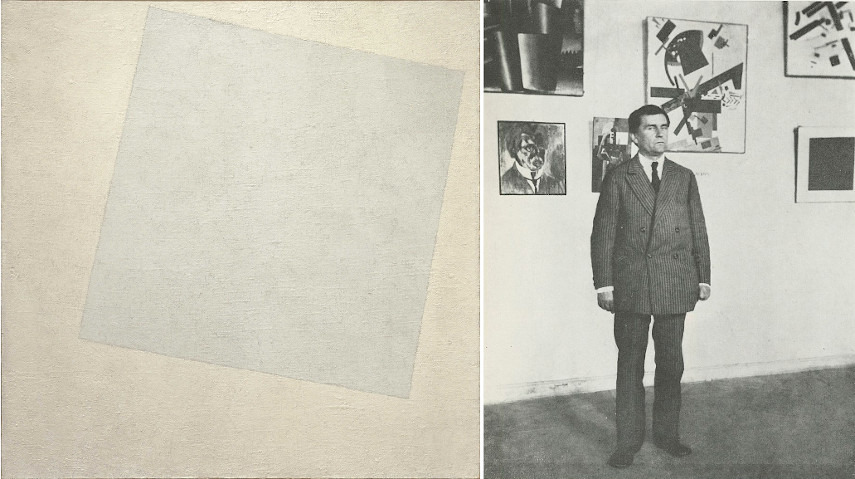Malevich's Black Square and the Birth of Non-Objective Art
By the mid-1910s, the art world underwent a transformation as the avant-garde movements of Futurism and Cubism gained momentum. Meanwhile, the Russian Empire was a hotbed of artistic experimentation, culminating in Kazimir Malevich's Black Square painted in 1915 – a groundbreaking abstract work that forever altered the course of modern art and inspired generations of artists to come.
Just two years before the October Revolution and the official dissolution of the tsarist regime, the propelling painter created a radical piece of art, giving birth to Suprematism. This art movement greatly impacted the entire generation of post-revolutionary Soviet artists.
Malevich painted four versions of the painting, with the last one painted in the late 1920s or early 1930s. Although forgotten for decades due to the rigid exclusion of avant-garde, which the Communist party, at the time, headed by Joseph Stalin, introduced in the 1930s, the Black Square’s magnetic power and mysteriousness still intrigue many.

Malevich’s Black Square – The New Icon
The first rendition of the Black Square was part of a stage curtain design Kazimir Malevich made for a 1913 Cubo-Futurist opera, Victory over the Sun, conceived by the poets Velimir Khlebnikov and Aleksei Kruchyonykh and the musician Mikhail Matyushin. These men were Malevich’s friends with whom he shared the same standpoints on artmaking. This particular way of thinking was summarized in a manifesto that proposed rejecting rational thought with an emphasis on the dissolution of Western systems and hierarchies.
Right after finishing Black Square two years later, Malevich showed the painting in The Last Futurist Exhibition 0,10 that took place in St. Petersburg. At the exhibition, the artist presented the work in the middle of the constellation of Suprematist paintings. The Black Square was positioned high up in the corner of the room, similar to the traditional hanging of Russian Orthodox icons. In doing so, the artist wanted to highlight the spiritual relevance of the painting and appoint it an official symbol of his trademark style.
At the core of the Suprematist radical approach to painting stood color and shape. Reduced geometric shapes and saturated yet limited color pallet allowed Malevich to commit fully to the painterly process without being omitted with any form of representation. It is essential to add that when the Black Square was showcased for the first time, World War I raged around the world. At the same time, the Russian empire was shaken by the 1905 Russian Revolution that eventually led to the 1917 October Revolution. The very appearance of the Black Square was revolutionary. Although accustomed to futurist and cubist experiments, the local audiences have never experienced this kind of artwork, making Malevich’s work a symbol of a new era.

The Zero Point of Painting
More importantly, this legendary work represented zero point of painting, summarizing Malevich’s radical agenda. The artist underlined, "It is from zero, in zero, that the true movement of being begins."
I transformed myself in the zero of form and emerged from nothing to creation, that is, to Suprematism, to the new realism in painting – to non-objective creation.
From a contemporary perspective, this notion of nothingness was in sync with a tabula rasa, the Latin phrase defining a space cleansed of preconceived ideas that were famously appropriated by the Dadaists in 1916. Malevich firmly believed that art has to be produced to repeat the “real forms of nature." In the text From Cubism and Futurism to Suprematism: The New Painterly Realism, published the same year the Black Square was exhibited, the artist emphasized his transition to the "zero of form" that allowed coming out of the "slough of academic art."

The Legacy of Malevich’s Black Square
By the late 1920s, Malevich returned to figurative painting. However, all these depictions of depersonalized peasants and workers acting as the inhabitants of the Suprematist world were signed with a little black square. The 1935 photograph of Malevich on his deathbed clearly suggests the significance of the artist’s symbol as the Black Square painting hangs above his body laid in a suprematist-style coffin.
Many artists supported Suprematism, although it clashed with Constructivism, another movement better suited to the ideological framework of the soon-to-be Soviet Union. As the ideological course altered with Stalin and Social Realism was introduced as the official art, Malevich and many other artists faded into oblivion. The grand artist was perceived as a formalist and, as such, was interrogated and incarcerated for two months.
Avant-garde art was eventually put into a cellar and practically eradicated from the public sphere until rediscovered by Western art historians in the 1980s. The Black Square became the subject matter of numerous scholarly analyses, and each new insight contributed to the mythical status of the painting. For instance, during the microscopic overview of the Black Square in 2015, the Tretyakov Gallery art historians came upon a startling discovery - a message written in pencil on the white paint positioned in the lower left corner of the painting. The phrase Battle of negroes during the night, referring to an 1893 comic by French writer Alphonse Allais, sparked controversy surrounding Malevich’s racism. However, one of the researchers involved in the process argued that hardly the phrase was written by Malevich. Instead, it was written by an individual mocking The Black Square. This conclusion is supported by the fact that the pencil marks were conducted after the underlying paint had dried.
Today, this painting is widely heralded as the seminal abstract artwork of the 20th century, along with the masterpieces such as Picasso’s Guernica or Yves Klein’s Blue Monochrome. From the black monochromes of Frank Stella and the buildings of Zaha Hadid to the aesthetic of Laibach and NSK, this painting continues to inspire practitioners from different disciplines. Its radiating presence does not leave any observer restless, attesting to the timeless vision of Kazimir Malevich.
Featured image: Kazimir Malevich - Black Suprematic Square, 1915. Oil on linen canvas, 79.5 x 79.5 cm. Tretyakov Gallery, Moscow. Image via Creative Commons.
Can We Help?
Have a question or a technical issue? Want to learn more about our services to art dealers? Let us know and you'll hear from us within the next 24 hours.
